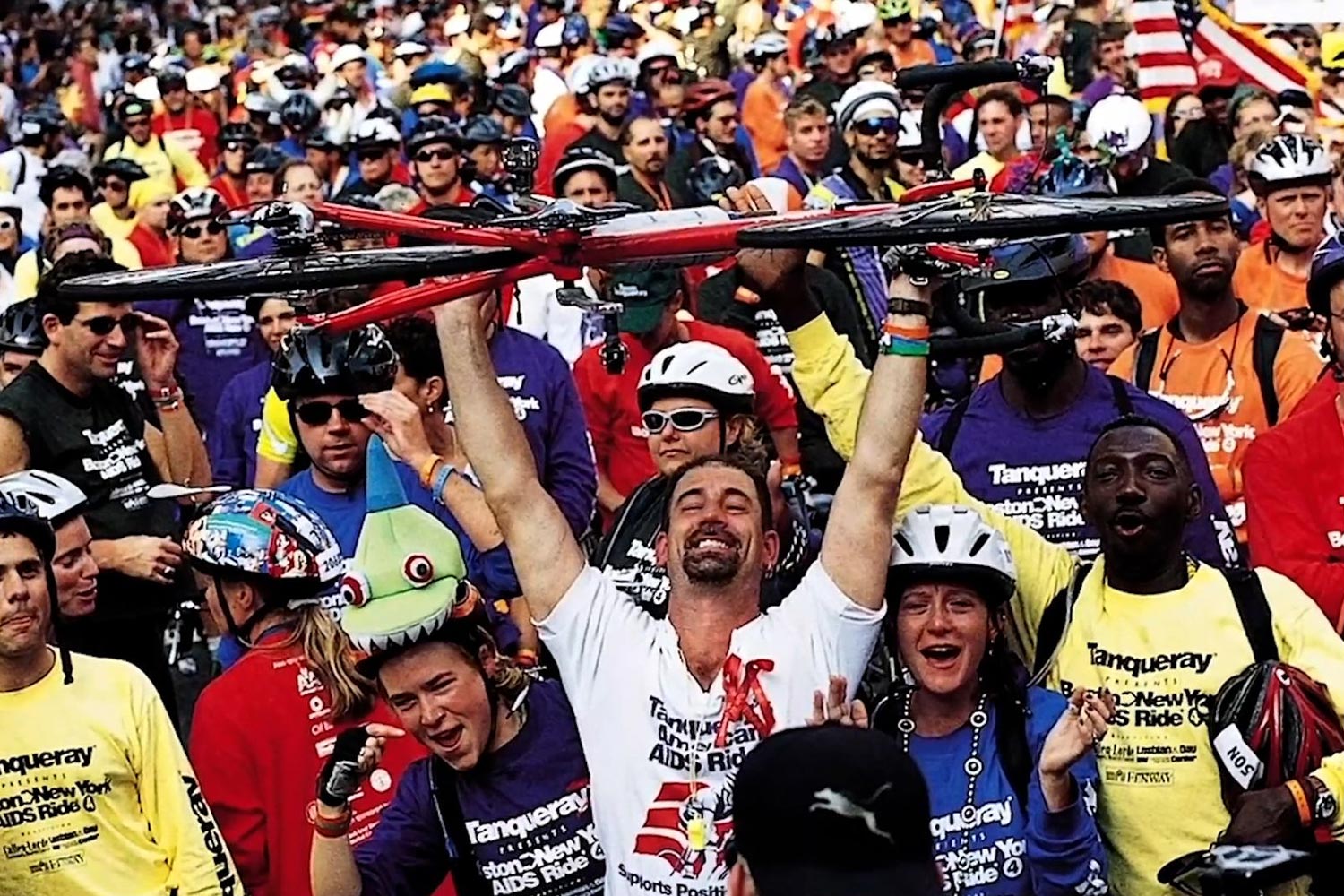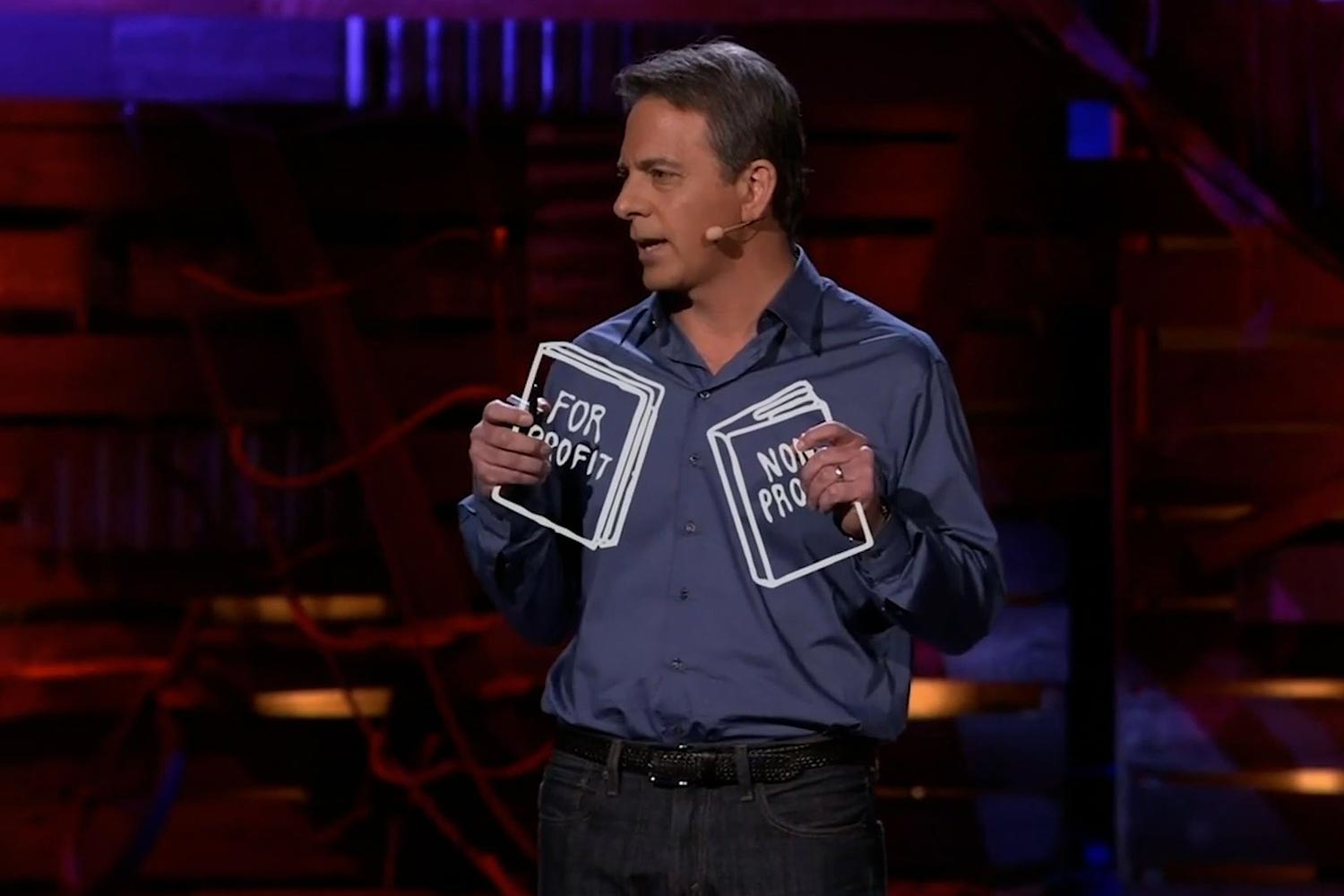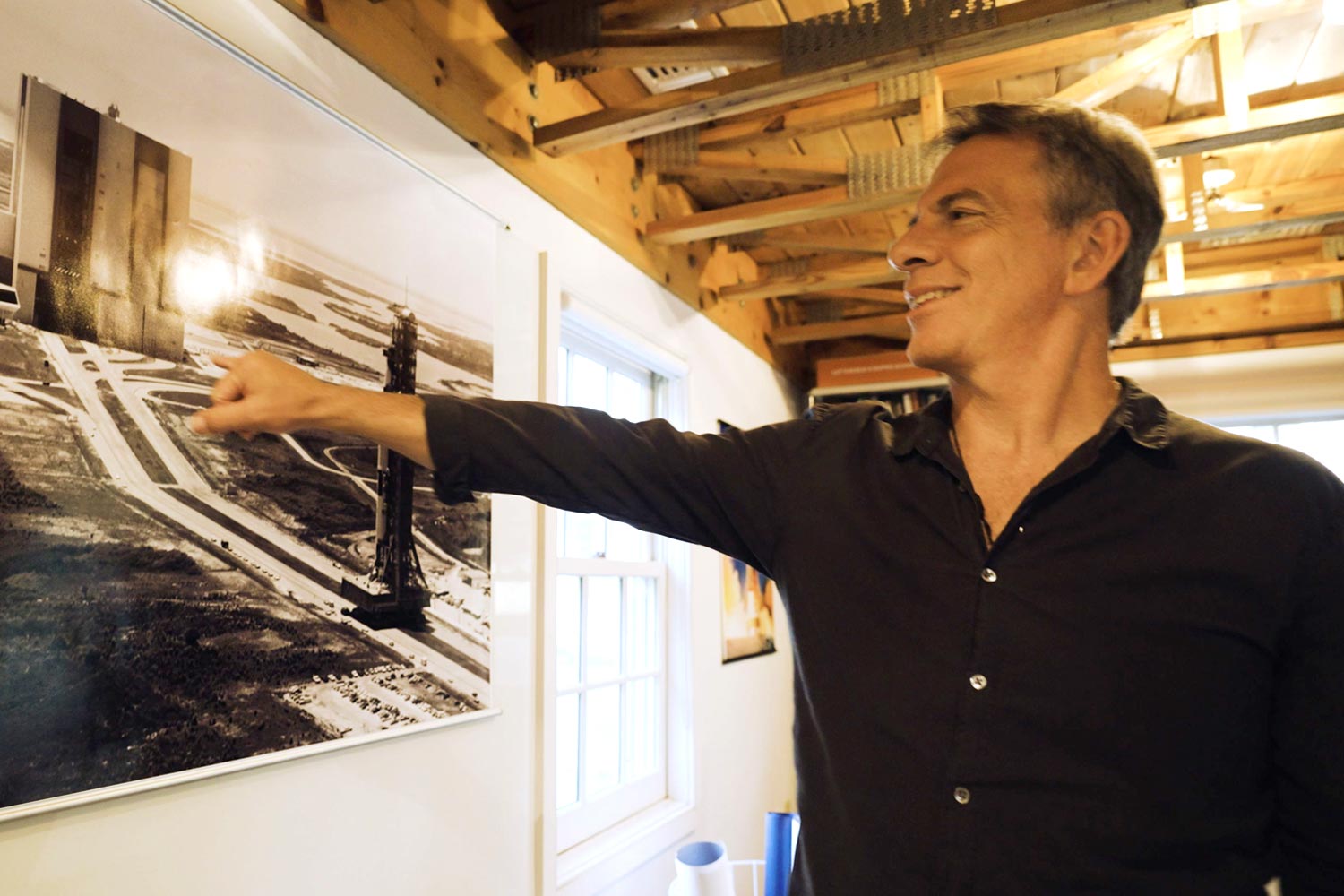Towards the beginning of the film UnCharitable, Dan Pallotta tearfully recounts the day that the furniture was sold off at the company he founded.
His company, Pallotta TeamWorks, ran multi-day events to fundraise for charities. The events are ones most people are familiar with — like the AIDS Ride and the Avon Walk for Breast Cancer — until 2002, when the company crumbled following reports in the media that his company took too large a cut of the donations.
With his fundraising master plan branded as wasteful and misleading, Pallotta lost his job, his company, and his reputation in short order. UnCharitable uses Pallotta’s rise and fall in the world of charitable fundraising as a cautionary tale, not for any errors in his strategy for fundraising, but painting Pallotta and his events as victims of unfair expectations on charitable fundraising and giving.
A model for astonishing success.
Pallotta got his start in charitable fundraising by trying to find a way to raise money for AIDS research.
He had observed that everyday people wanted to help but did not have a way to get directly involved.
Pallotta then came up with the idea of a multi-day bike ride from San Francisco to Los Angeles that would raise money for research. Each ride participant would have a minimum fundraising goal and be supported in soliciting donations directly from their friends, family, and community.

Participants at the AIDS Ride, from the film UnCharitable. Photo courtesy UnCharitable Film, Inc.
The first AIDS Ride had only 478 participants but raised over $1M — an astonishing success. While continuing to expand the AIDS Ride to multiple sites, Pallotta also began a partnership with Avon to raise money for breast cancer.
The first three-day walk was held in 1998 and raised $4.2M. The model for the events was similar: Mass-marketing multi-day events with a fundraising “floor” per participant and generating massive revenue.
Pallotta TeamWorks continued to expand and eventually had 400 employees in 16 cities. The company helped charities use his model to raise money for causes such as suicide prevention and the American Lung Association.
Spending too much?
But, in 2002, Pallotta and his company came under fire following media reports about the amount of money spent on marketing and fundraising. Pallotta himself was derided for his salary.
A former AIDS Ride participant sued Pallotta’s company as part of a consumer class-action lawsuit, claiming the donated funds were “misrepresented and mismanaged.”
Avon pulled out of its partnership. Pallotta was vilified. The company fell apart overnight.
In addition to causing his company to fold, the resulting fracas caused a massive drop in funds raised for charitable causes — particularly breast cancer.
“A liability to dream in the nonprofit sector.”
Eventually, Pallotta came back swinging, starting with a successful 2013 TED Talk, then his book Uncharitable: How Restraints on Nonprofits Undermine Their Potential, and now the film — all based on the idea that the limitations placed on how to raise and spend money for charity holds back solutions for the biggest crises we face.

Dan Pallotta’s 2013 TED Talk. From the film UnCharitable. Photo courtesy UnCharitable Film, Inc.
While arguing the criticisms about Pallotta and his company are unfounded, the film also compares how big risks are rewarded in the private sector, but not for nonprofits. But by keeping pressure on nonprofits to keep costs low, we repress the ability to take big risks.
“We have actually made it a liability to dream in the nonprofit sector.” Pallotta observes.
If we unleashed the power of nonprofits to have a long-term vision, he argues, there would be incentive to solve some systemic problems.
Pallotta’s company is not the only one that faced a backlash for its “big bet” method of raising money. The film recounts accusations of financial impropriety leveled at the Wounded Warrior Foundation, the national Boys and Girls Club and others.
In most cases, the film argues, a significant increase in costs was directly tied to a far greater return on that investment and resulted in an overall increase in program funds. But these same increased costs, presented in the media without proper context, are viewed as wasteful, even deceptive.
When the nonprofit Wounded Warrior came under attack in 2016 for allegations of lavish spending, CEO Steven Nardizzi lost his job and even faced death threats. Pallotta points the blame at the media for not taking the time to understand the financial details or present the nonprofit’s side of the story.
Watchdogs: Confusing frugality with morality?
The film also takes aim at funders and so-called “watchdog” agencies that associate overhead with operational efficiency and conflate that with better execution of the mission.
This minimal, overhead-driven approach drives nonprofits to be less effective, the film argues. It does not follow that if you eliminate a budget for fundraising, more money is available for program beneficiaries, Pallotta points out. Nonprofits are branded as “wasteful” when their critics neglect to account for the programmatic outcomes.
“This is what happens when we confuse morality with frugality,” Pallotta observes in his 2013 TED Talk.
The film is at its best when it focuses on nonprofit leaders telling their stories of trying to build effective models without running afoul of the “overhead” problem.
Describing funding that is “program only” (i.e., the funds cannot be used for staff salaries), the CEO of Inclusive Action for the City Rudy Espinoza laughs ruefully: “There’s some funders that say, ‘Oh, well we want this to go to programs.’
“You can’t put anything there for salaries,” he says. “You just can’t do it, in the budget, in the proposal. Who do you think runs the programs, you know? Who do you think designed the programs? Who do you think is out on the street building the pipeline so people can actually benefit from the programs?”
Milton J. Little Jr., president and CEO of United Way Greater Atlanta describes how the pressure to keep costs low also hampers the ability to hire.
“When you say, ‘I’ve got to keep the overhead low,’ you undermine the ability of the organization to attract the right staff, to be able to make the right kind of decisions to have the right kind of resources.”
Hearing from Espinoza, Little and other nonprofit leaders keeps the film from drifting too far into Pallotta’s ruin-and-recovery story.
Pallotta remains a controversial figure in the nonprofit sector. Phil Buchanan, the president of The Center for Effective Philanthropy and author of the book Giving Done Right: Effective Philanthropy and Making Every Dollar Count disputed some of the points made in Pallotta’s TED Talk a 2013 article in the Huffington Post.
Although Buchanan agrees that the focus on overhead is harmful to nonprofits, he argues Pallotta’s position ignores some very valid criticism of wasteful spending done under the nonprofit umbrella – particular on fundraising.
“By lumping together fundraising costs that too often are, in fact, questionable, with investments in professional development or performance measurement, as Pallotta does, we do the cause of reducing the emphasis on overhead a disservice.” Buchanan writes.
How nonprofits can prepare and respond to accusations of “too much overhead.”
Regardless of how anyone feels about UnCharitable’s message or Pallotta personally, the overhead watchdog ethos is alive and well.
Several themes come through in the film that help nonprofits prepare and protect themselves from the kind of attack that brought down Pallotta and his company. So how can a nonprofit position itself to rebut claims of inefficient spending?
Consider some of the following steps:
Have a short, punchy explanation ready.
Transparency is not enough. Many nonprofits that experienced fundraising/spending scandals already posted their financial information online for anyone to see.
Most people are not going to take the time or have the expertise to interpret this information.
Focus on the big picture by having a short, punchy way to explain your budget priorities that will drive home how the money is spent such as: Every dollar we spend on fundraising results in three dollars in revenue.
Have your defense ready.
Nonprofits that have successfully weathered the overhead storm have a clear story to tell and were not afraid to brag about their successes by sharing the personal stories of people they have helped.
Be prepared to defend the nonprofit’s budget and pay practices. Ensure that the nonprofit’s board is supportive of these strategies and understands how they are executed.
“Make sure you have a good therapist.”
In the worst-case scenario, if facing an overhead driven backlash, Pallotta himself who offers this piece of advice in a 2012 article in the Harvard Business Review: “Make sure you have a good therapist.”





